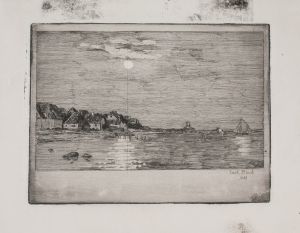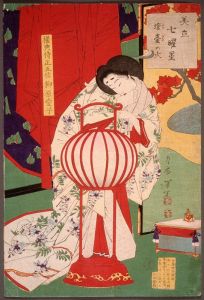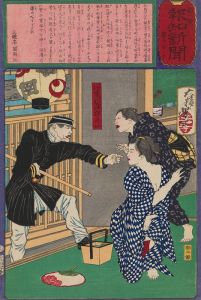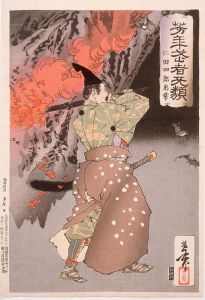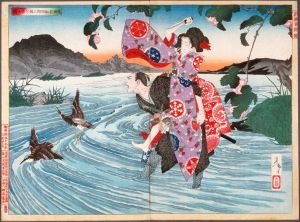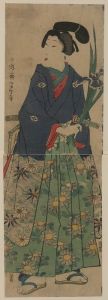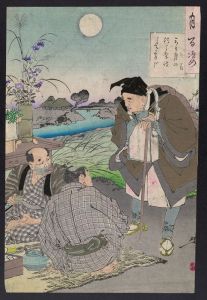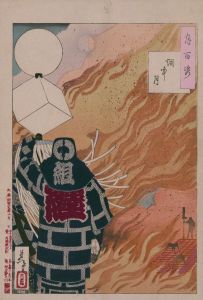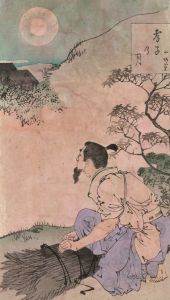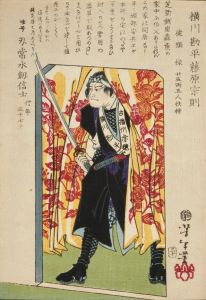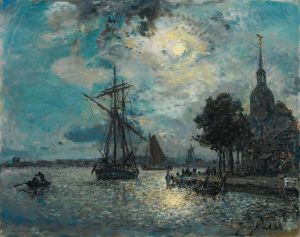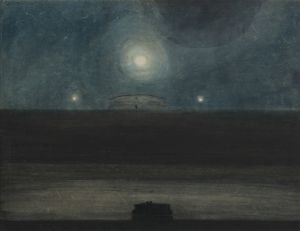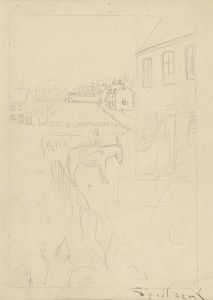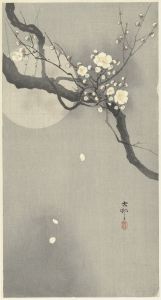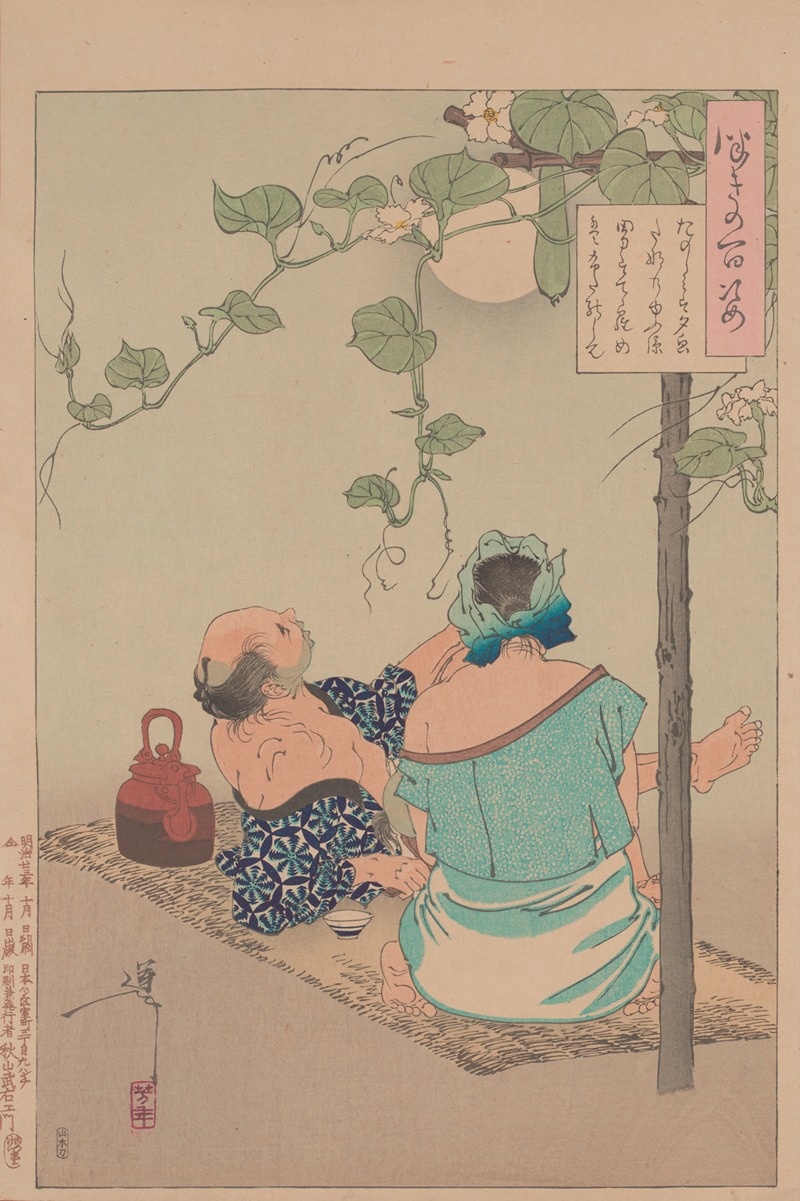
A country couple enjoys the moonlight with their infant son
A hand-painted replica of Tsukioka Yoshitoshi’s masterpiece A country couple enjoys the moonlight with their infant son, meticulously crafted by professional artists to capture the true essence of the original. Each piece is created with museum-quality canvas and rare mineral pigments, carefully painted by experienced artists with delicate brushstrokes and rich, layered colors to perfectly recreate the texture of the original artwork. Unlike machine-printed reproductions, this hand-painted version brings the painting to life, infused with the artist’s emotions and skill in every stroke. Whether for personal collection or home decoration, it instantly elevates the artistic atmosphere of any space.
Tsukioka Yoshitoshi (1839–1892) was a renowned Japanese artist, widely celebrated for his woodblock prints and his significant contributions to the ukiyo-e genre during the late Edo and Meiji periods. One of his notable works is "A Country Couple Enjoys the Moonlight with Their Infant Son," which exemplifies his mastery in capturing the subtleties of human emotion and the beauty of natural settings.
Yoshitoshi's career spanned a transformative period in Japanese history, marked by the transition from the feudal Edo period to the modernizing Meiji era. This era of change is often reflected in his work, which combines traditional Japanese themes with new influences and techniques. Yoshitoshi is particularly known for his series "One Hundred Aspects of the Moon" (Tsuki hyakushi), which explores various themes related to the moon, drawing from history, folklore, and literature.
"A Country Couple Enjoys the Moonlight with Their Infant Son" is a part of this series, which was published between 1885 and 1892. The series is considered one of Yoshitoshi's masterpieces and is highly regarded for its artistic quality and depth of storytelling. Each print in the series features the moon in some capacity, serving as a unifying element that ties together diverse narratives and scenes.
In this particular print, Yoshitoshi depicts a serene and intimate moment shared by a rural couple and their child under the moonlit sky. The composition is characterized by its delicate balance and attention to detail, typical of Yoshitoshi's style. The moonlight bathes the scene in a gentle glow, highlighting the tender expressions of the parents as they gaze at their infant son. This portrayal of familial love and tranquility is a recurring theme in Yoshitoshi's work, reflecting his interest in the human condition and the emotional connections that bind people together.
Yoshitoshi's use of color and line work in this print is exemplary of his mature style, which often features bold outlines and a rich, yet subtle, color palette. His ability to convey emotion through facial expressions and body language is evident in the way the couple interacts with their child, creating a sense of warmth and intimacy that resonates with viewers.
The print not only showcases Yoshitoshi's technical skill but also his ability to capture the essence of a moment, making it a poignant representation of everyday life in Japan during the Meiji period. It serves as a testament to Yoshitoshi's enduring legacy as one of the last great masters of the ukiyo-e tradition, bridging the gap between traditional Japanese art and the modern era.
Yoshitoshi's work, including "A Country Couple Enjoys the Moonlight with Their Infant Son," continues to be celebrated for its artistic merit and its ability to convey universal themes through the lens of Japanese culture. His prints remain influential and are studied for their innovative approach to storytelling and their contribution to the evolution of Japanese art.





